Top Landing Page Statistics to Know in 2024
In B2B organizations, when it comes to conversions and optimization, creating well-designed landing pages can be one of the most simple and effective ways to boost your sales and increase your revenue—they are fast to create, easy to maintain, and deliver awesome results. Wondering how to increase those landing page conversion rates? We’ve made it easier for you with 26 landing page statistics and best practices to use as part of your outreach strategy in 2024.
Best Landing Page Statistics and Practices
1. Use longer landing pages.
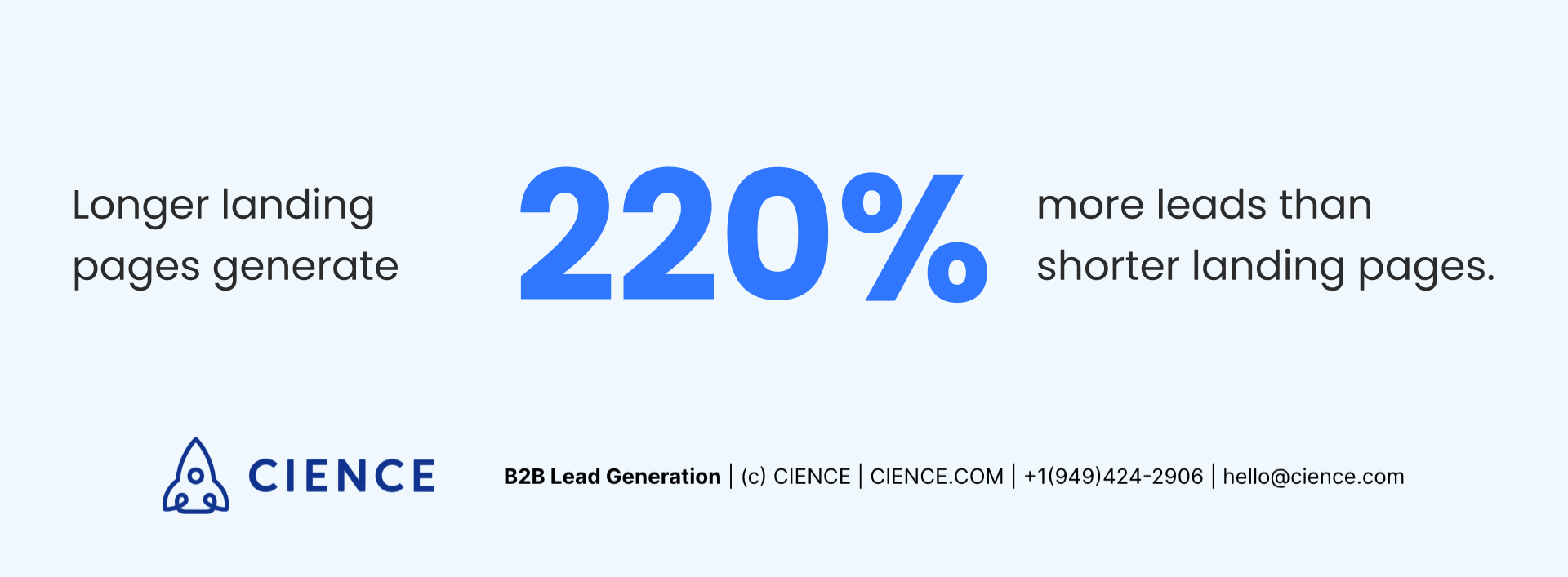
Source: MarketingExperiments, 2018
When working on a landing page design for B2B companies, most marketers prefer to put the call-to-action button right on top so the potential lead sees it immediately when opening the page. However, it is statistically proven now that having a long landing page with a call-to-action button at the end performs better. Why? Because users need to trust you first and only after they are ready to purchase. Convince them with your content that you are worth their attention, and they won’t pass by the CTA button any longer.
2. Combine content with images.
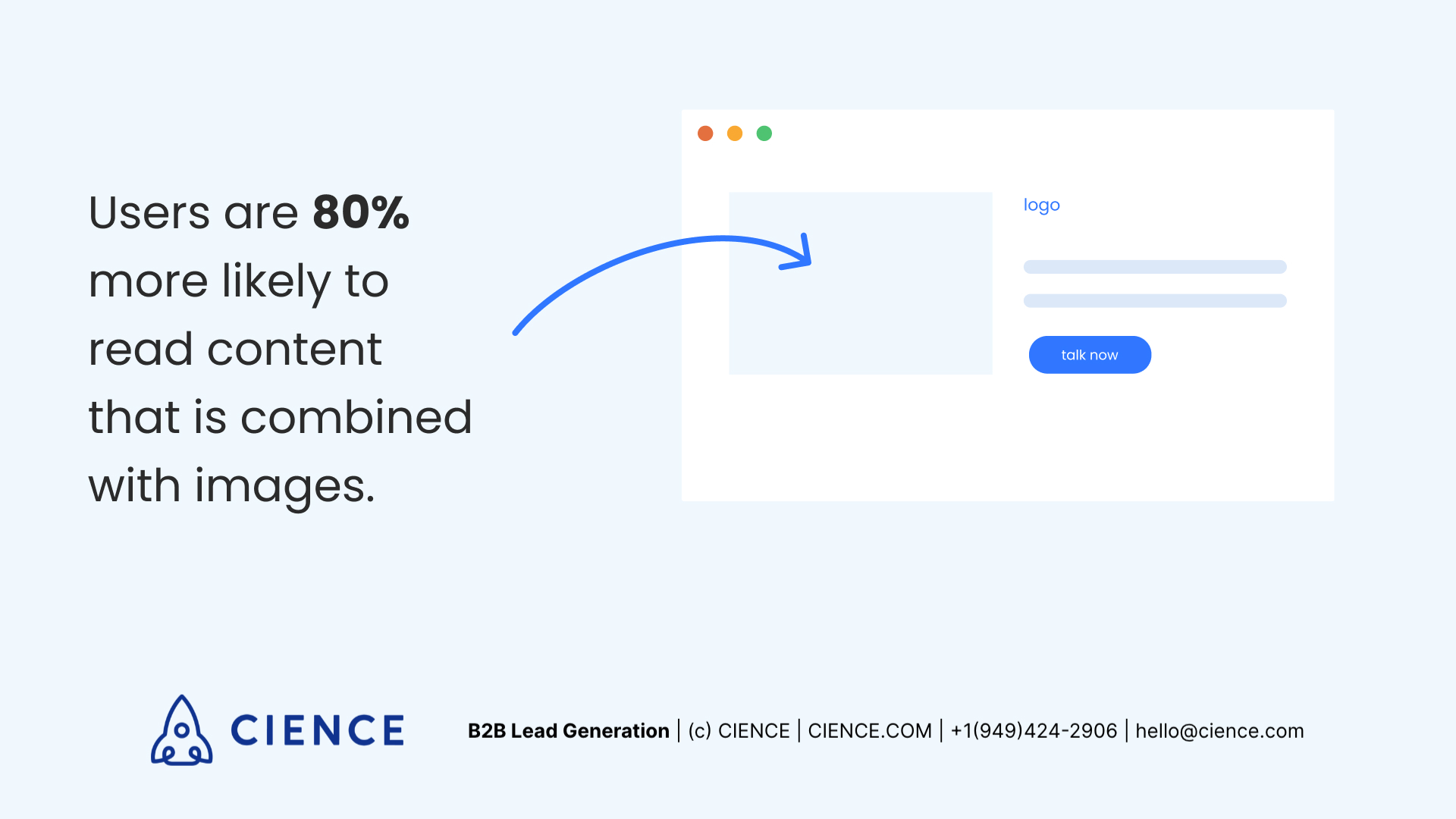
Source: Venngage, 2019
While images alone do not really generate any CTAs, they definitely add value to the written content of your landing page. With the huge success of Pinterest, Instagram, and Snapchat, visual-centric content is on a rise in marketing too. Now, as podcasts and chat apps such as Clubhouse are becoming more and more popular, who knows what’s next to come. Audio-centric landing pages?
3. Create more landing pages.
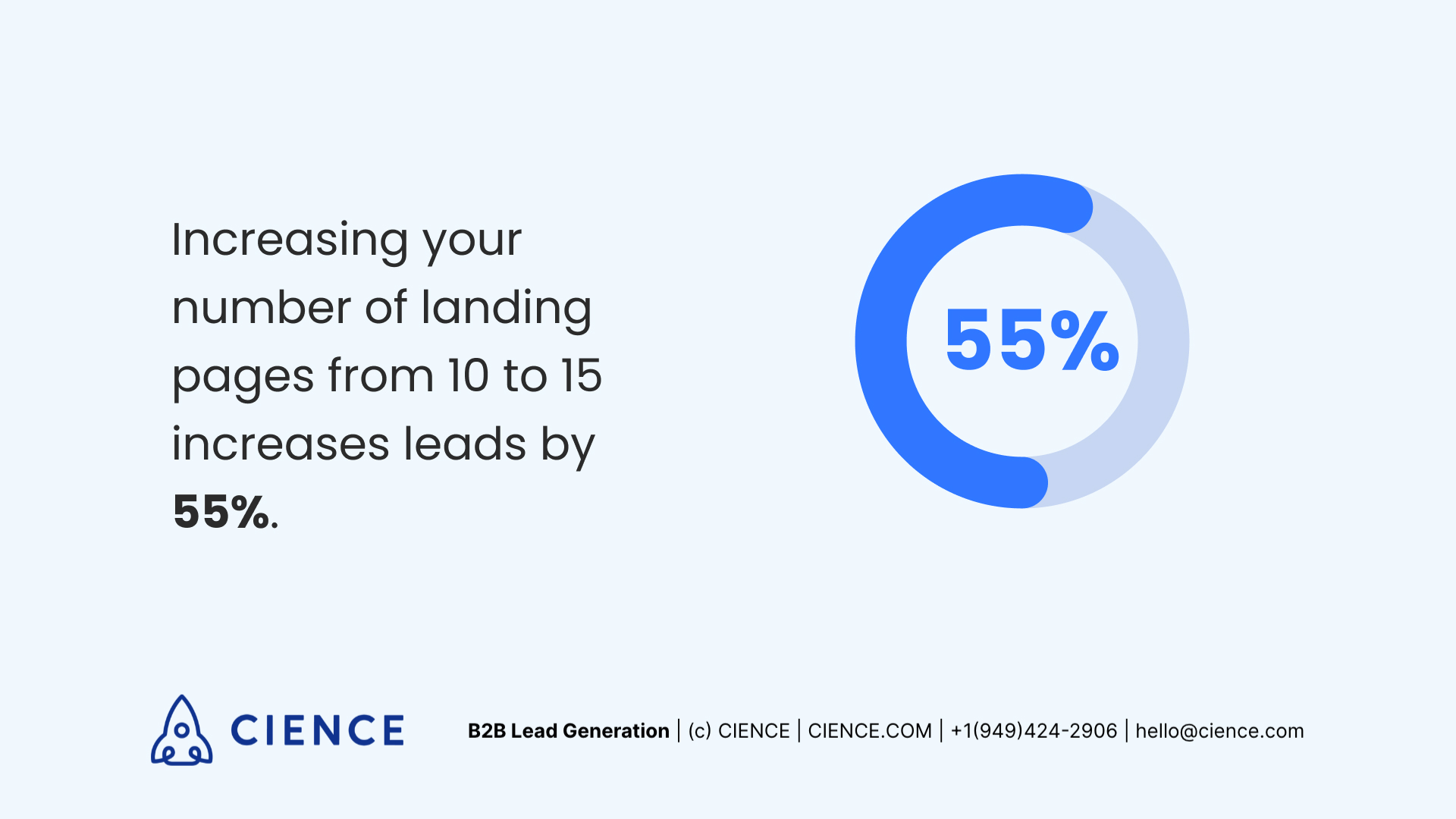
Source: Hubspot, 2019
Having a dozen landing pages for your B2B company is a huge benefit: It gives more conversion opportunities, more variety of marketing channels to use, and more specific targeting. This simplifies and speeds up the discovery to a qualified appointment route, which is precisely what landing pages are supposed to do.
4. Use marketing automation.
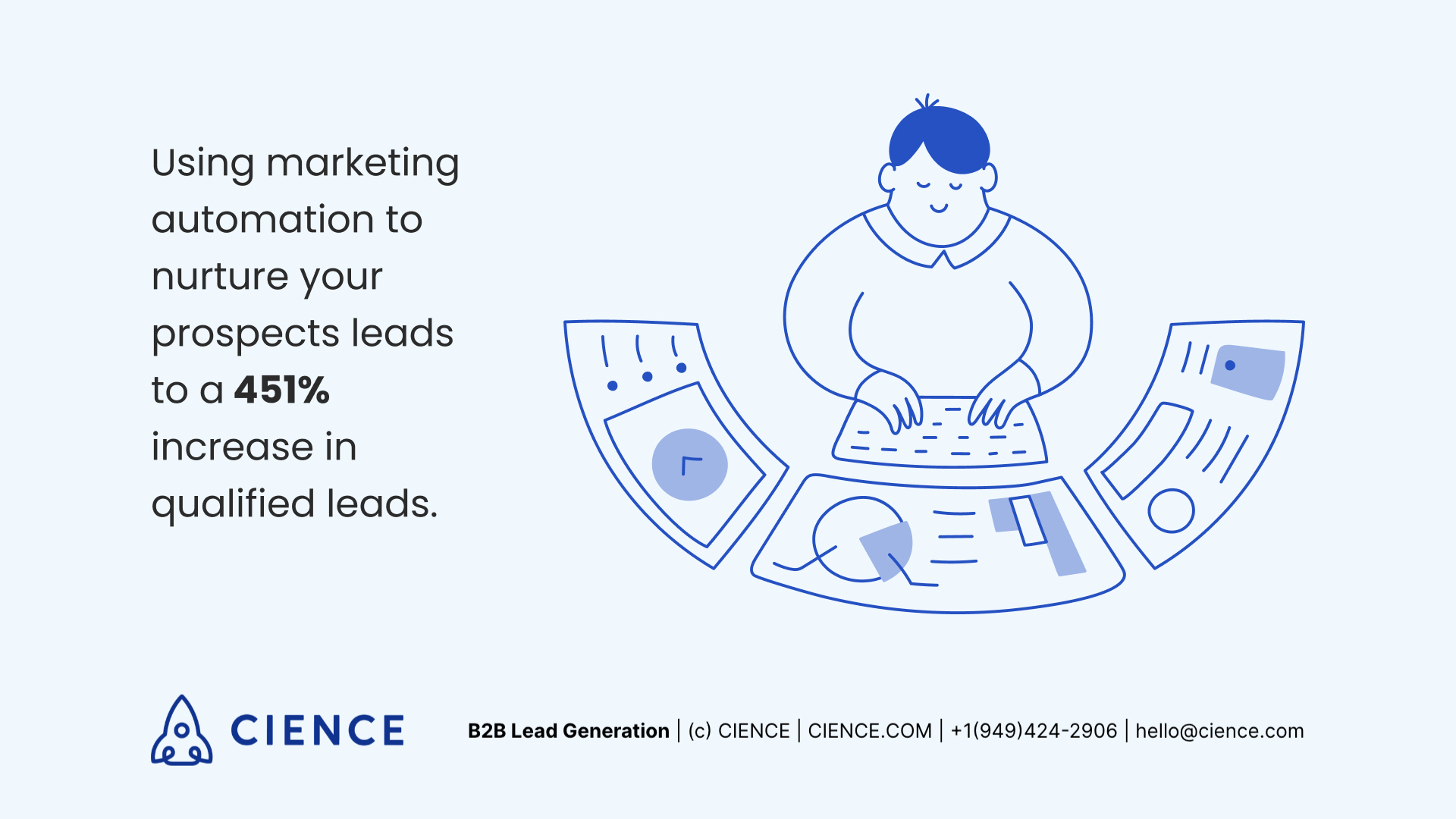
Source: Hubspot, 2019
B2B email marketing is all about providing a personalized experience to each customer. However, it is not easy to handle the workflow when you have to contact a hundred potential leads and also reply to twenty prospects a day. That’s where marketing automation comes in handy. With an automated process of processing leads throughout the buyer’s journey, your sales team will have more time to deal with things that require more urgent attention—like speeding up the process of setting up a qualified appointment with a promising prospect.
5. Use CRO tools.
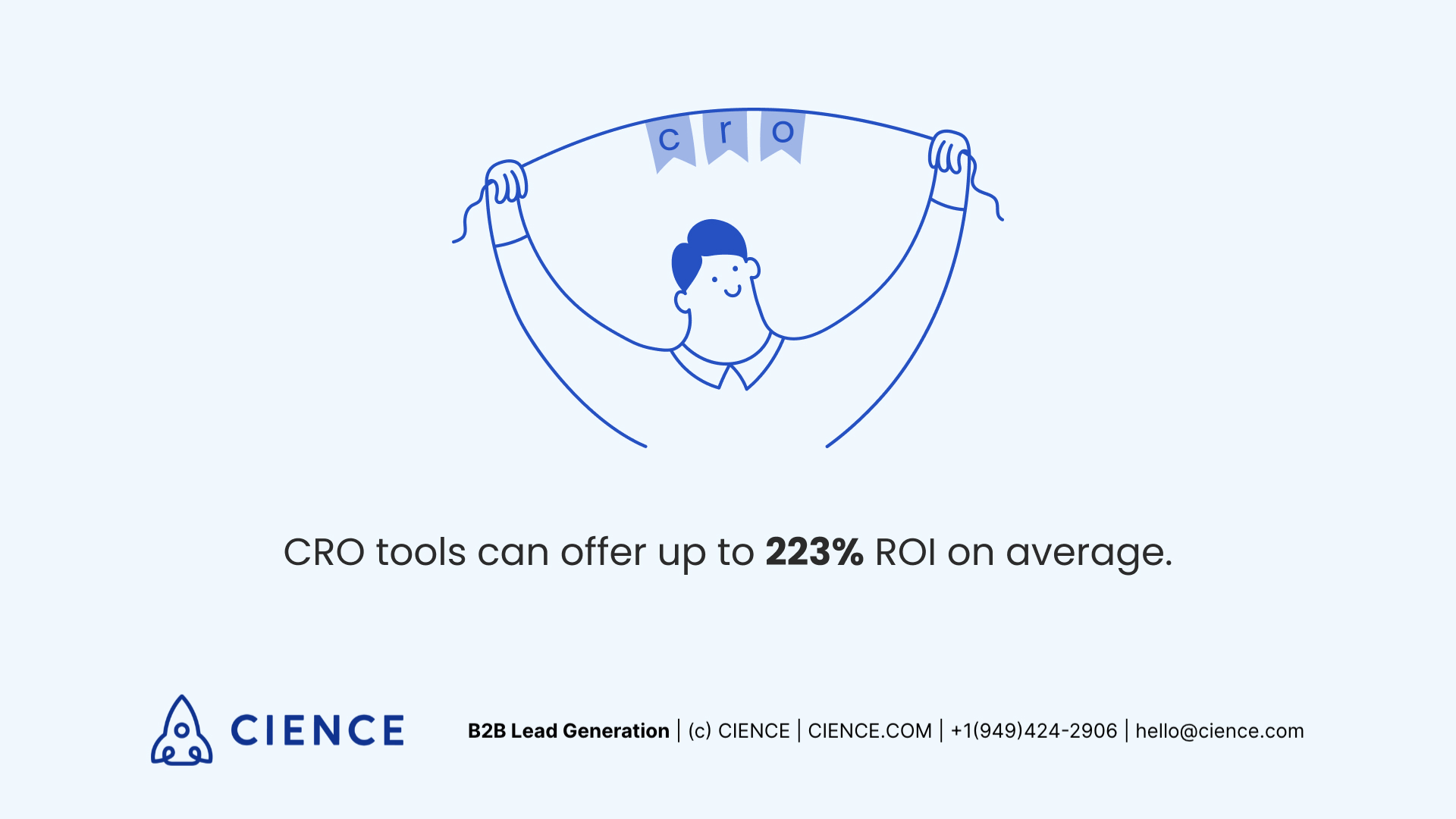
Source: VentureBeat, 2015
A B2B landing page contains numerous amount of different actions: buttons, links, images, videos, blog content, interactive flipbooks, etc. It is quite hard to keep track of all of it simultaneously. But with the right conversion rate optimization (CRO) tools, the job, which usually is done manually, can be finished in a matter of seconds. Just use it properly and you might receive great results back, like a 223% increase in ROI. Sounds amazing, right?
6. Include testimonials.
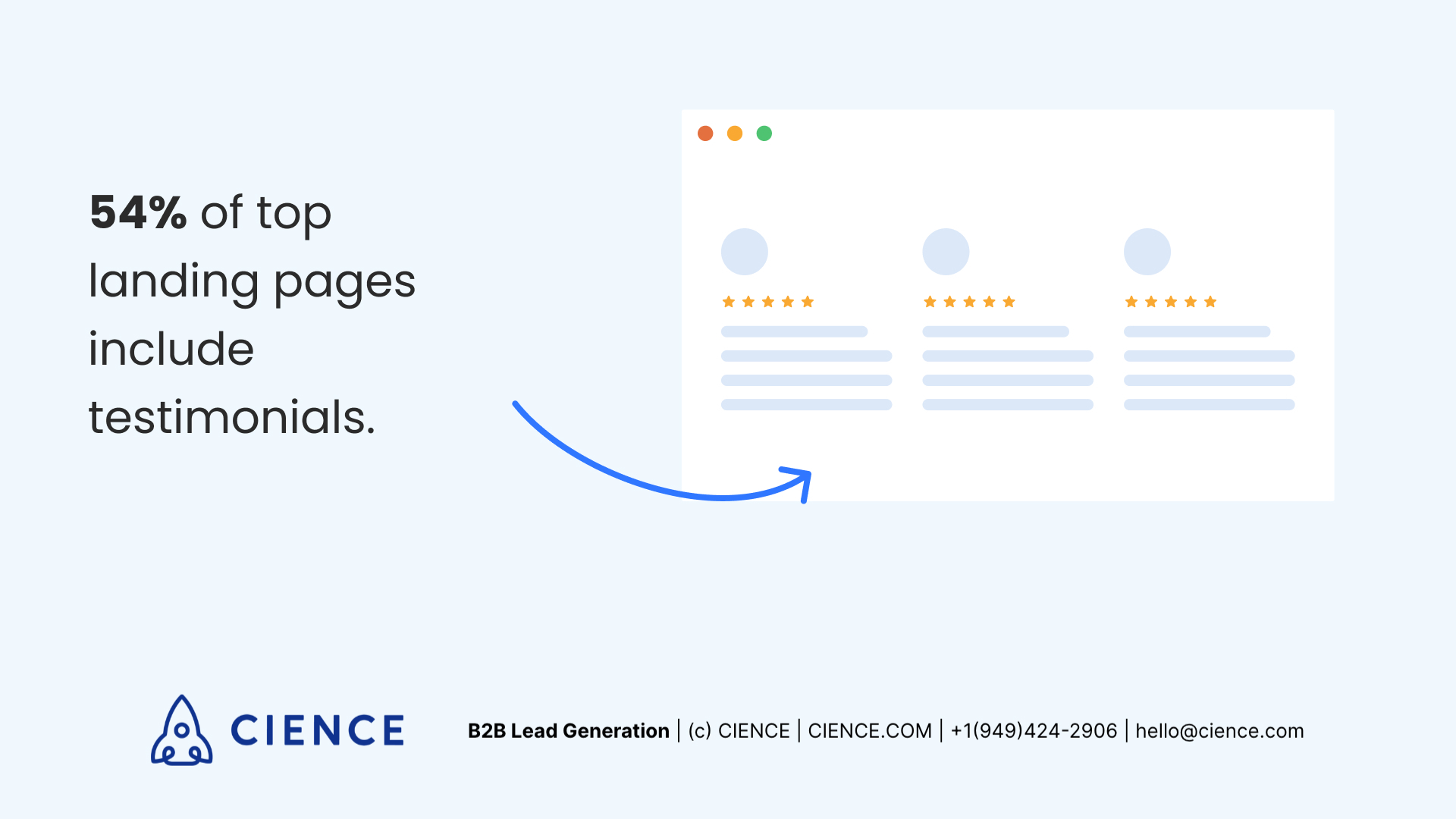
Source: Nifty, 2018
Think about it: What do you do first when purchasing something online? Check the reviews on the product, right? In B2B, these reviews are testimonials from happy business owners. If you have some great business collaborations that you are proud of, don’t be shy—use them to demonstrate to others that people trust you and are satisfied with your service.
7. Apply MoFu and lead management strategy.
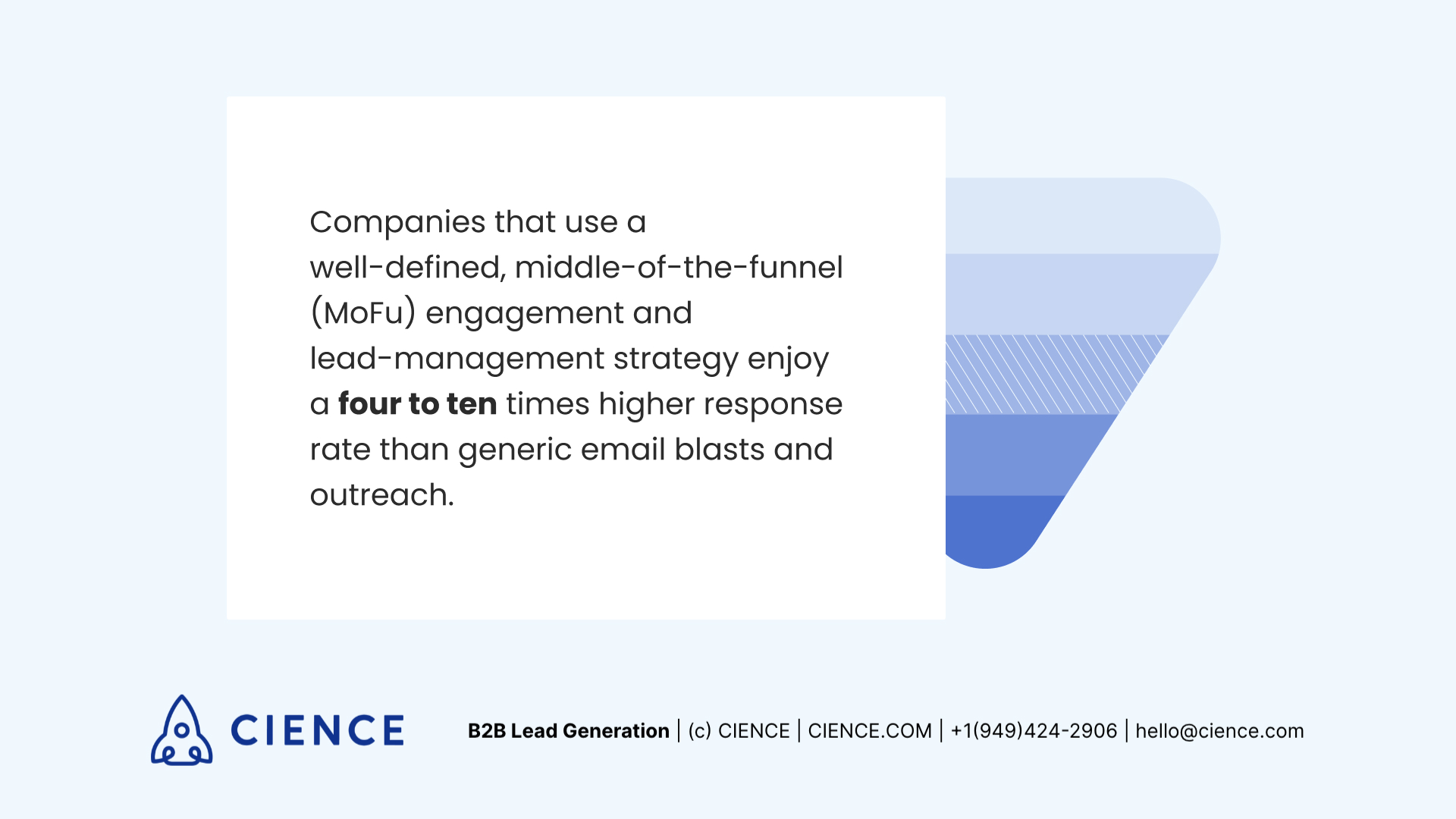
Source: Hubspot, 2020
Everyone wants what is best on the market. With a decent MoFu strategy, which presumes that your services are a perfect fit for your prospect’s needs, you may enjoy the great output from your efforts made. But remember, you should actually be the best fit, otherwise your reputation might be ruined forever.
8. Get your landing page ranked in maps.
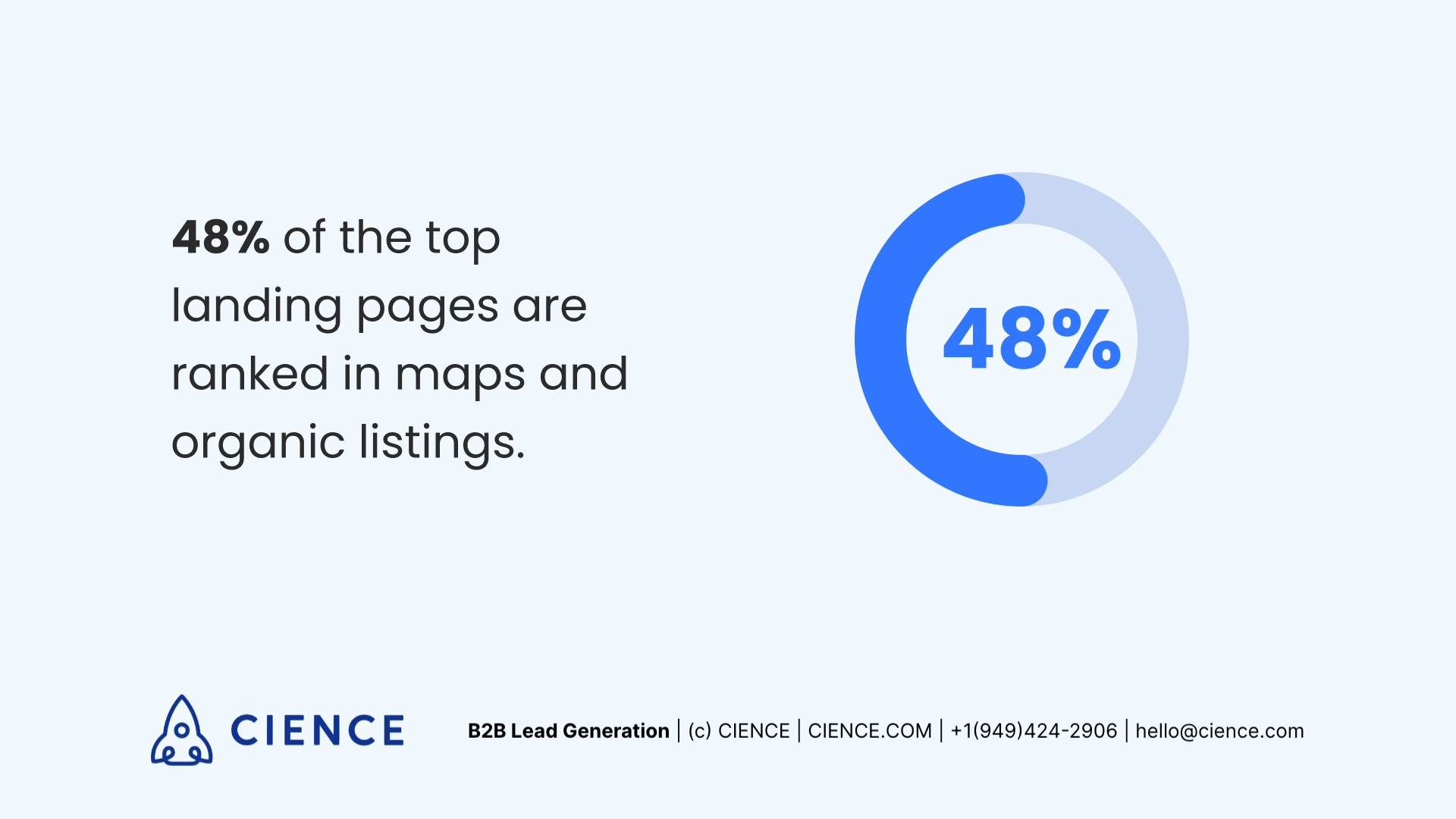
Source: Nifty, 2019
Landing pages with embodied maps are usually targeted at locals. That is why half of them rank so well in maps. Besides that, because landing pages usually include high-volume keywords, they rank high in the organic search, or organic listing, which is a great contribution to SEO.
9. Switch to click-through landing pages.
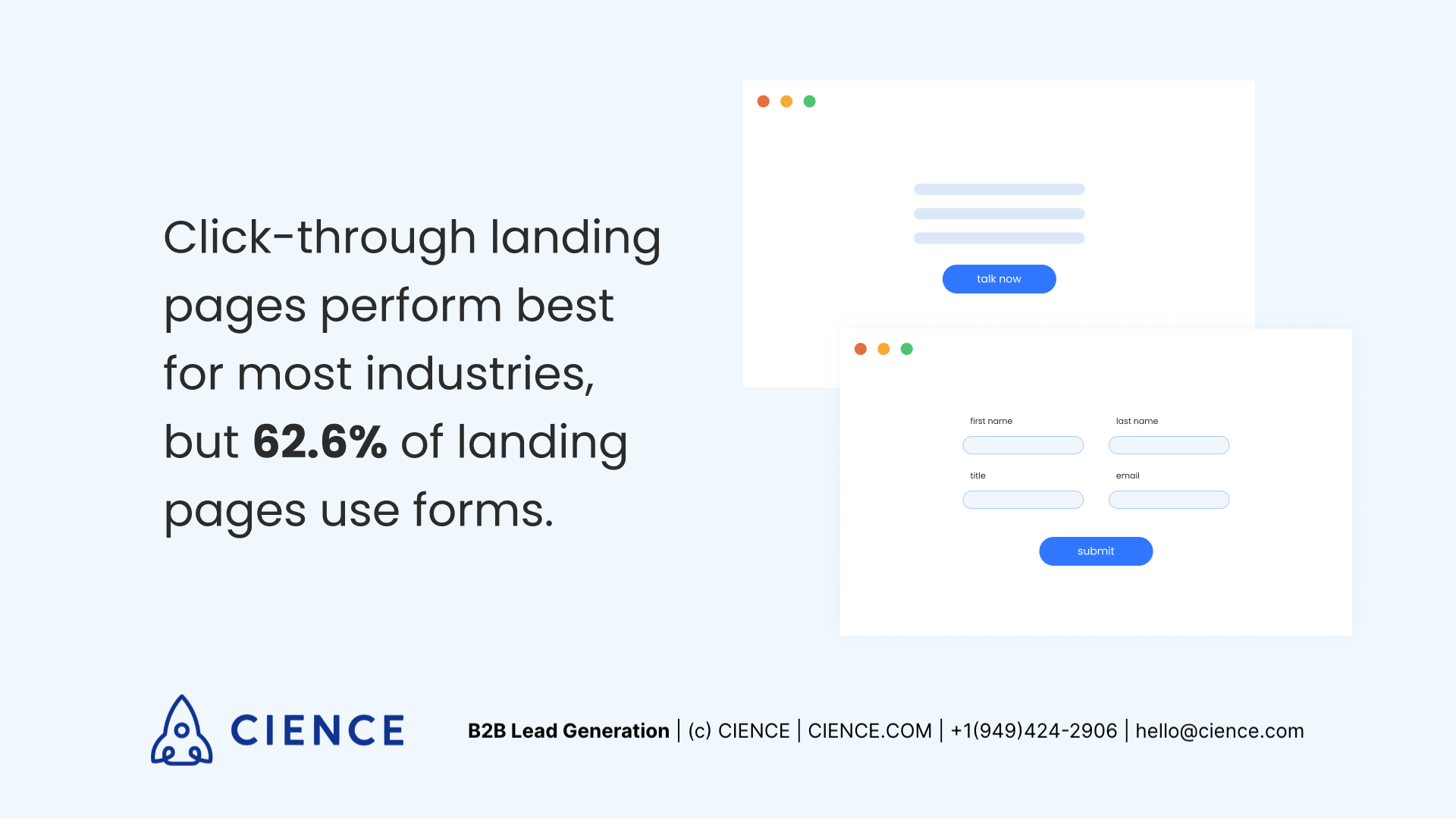 Source: Unbounce, 2019
Source: Unbounce, 2019
A landing page without a form, or a click-through landing page, demonstrates high efficiency when used right. Their purpose is to warm up a visitor before sending them down the sales pipeline. However, most businesses stay true to landing pages with forms.
Landing Page Conversion Rate Statistics
10. Create a good headline to improve CTA.
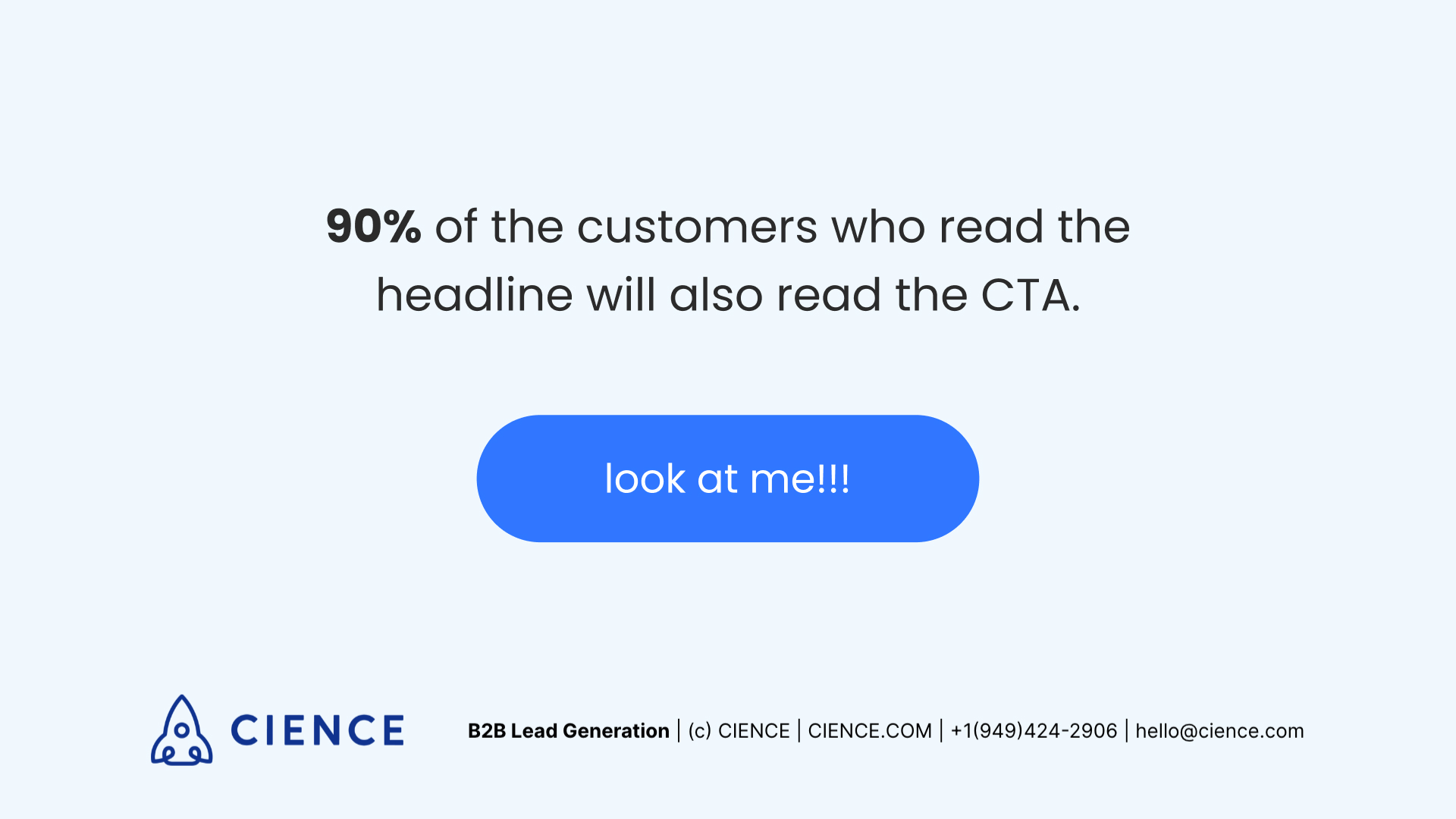
Source: Unbounce, 2013
Everybody knows that an intriguing, catchy headline is essential if you want people to read the article. But did you know that a good title is also a must to make people your customers? Nine out of ten people will check your CTA if you’ve got a good title. Try this strategy with your next blog post to see the results.
11. Most CTA pages are green.
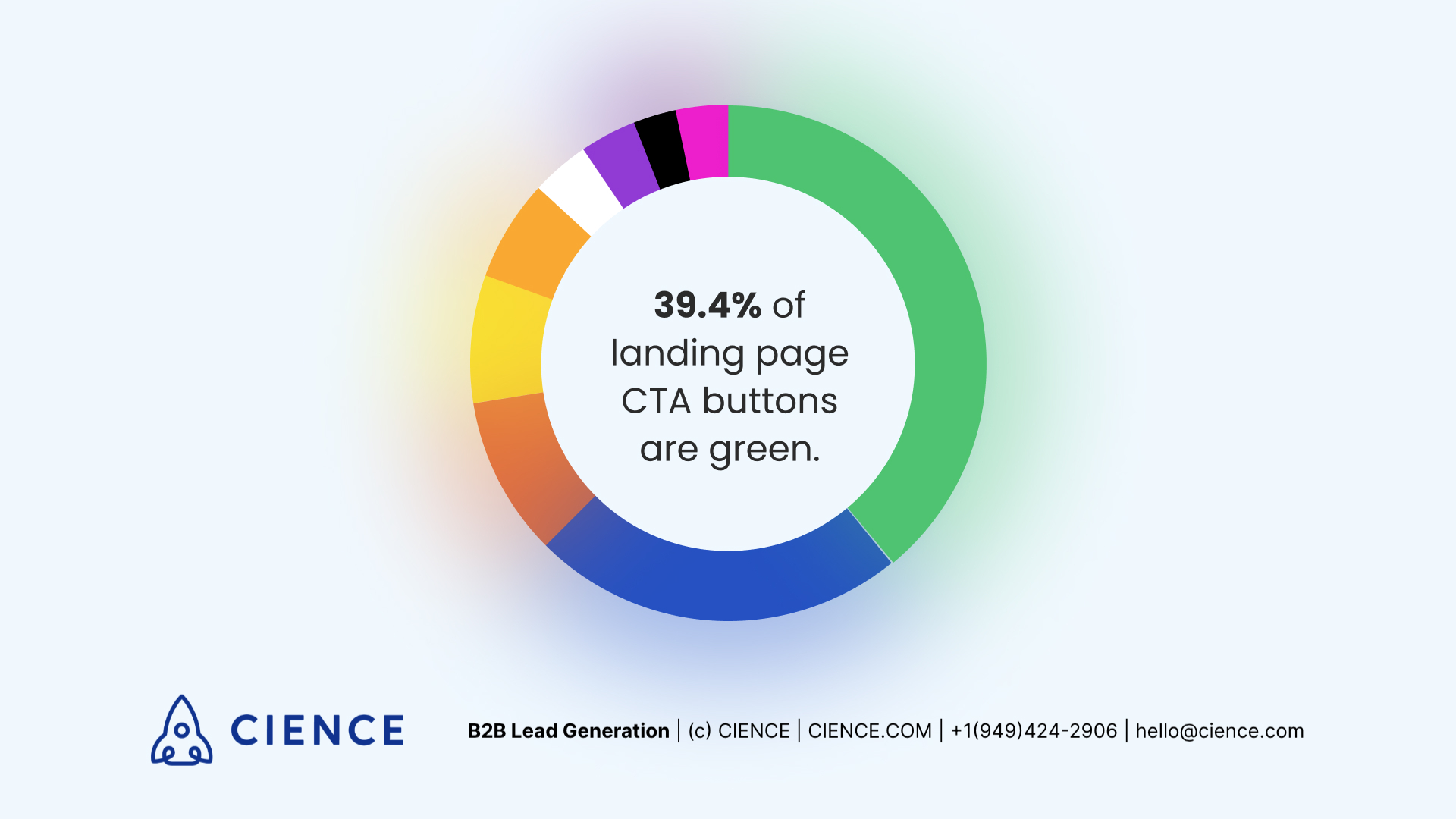
Source: ChartMogul, 2018
Green is an awesome color; it is also a great choice for your CTA button. It’s not definitive that it will affect the conversions based on this report, but it’s worth a shot!
12. Use personalized CTAs.
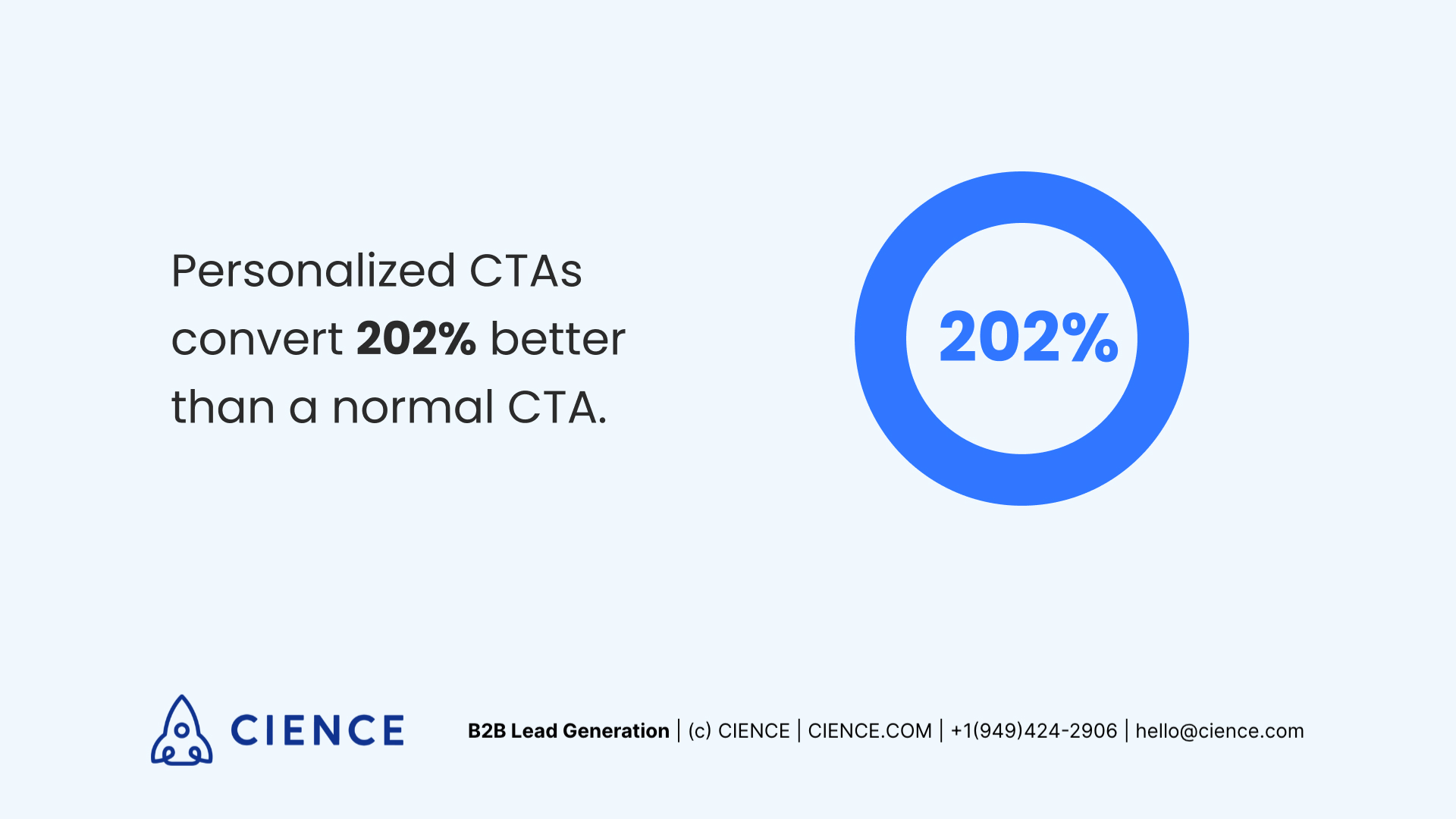
Source: Hubspot, 2018
Smart CTAs, or CTAs that are adjusted to certain individual persona characteristics, demonstrate better results at converting leads. For example, you may use location or language, or even income as a CTA to achieve better results.
13. Never put multiple offers on one landing page.
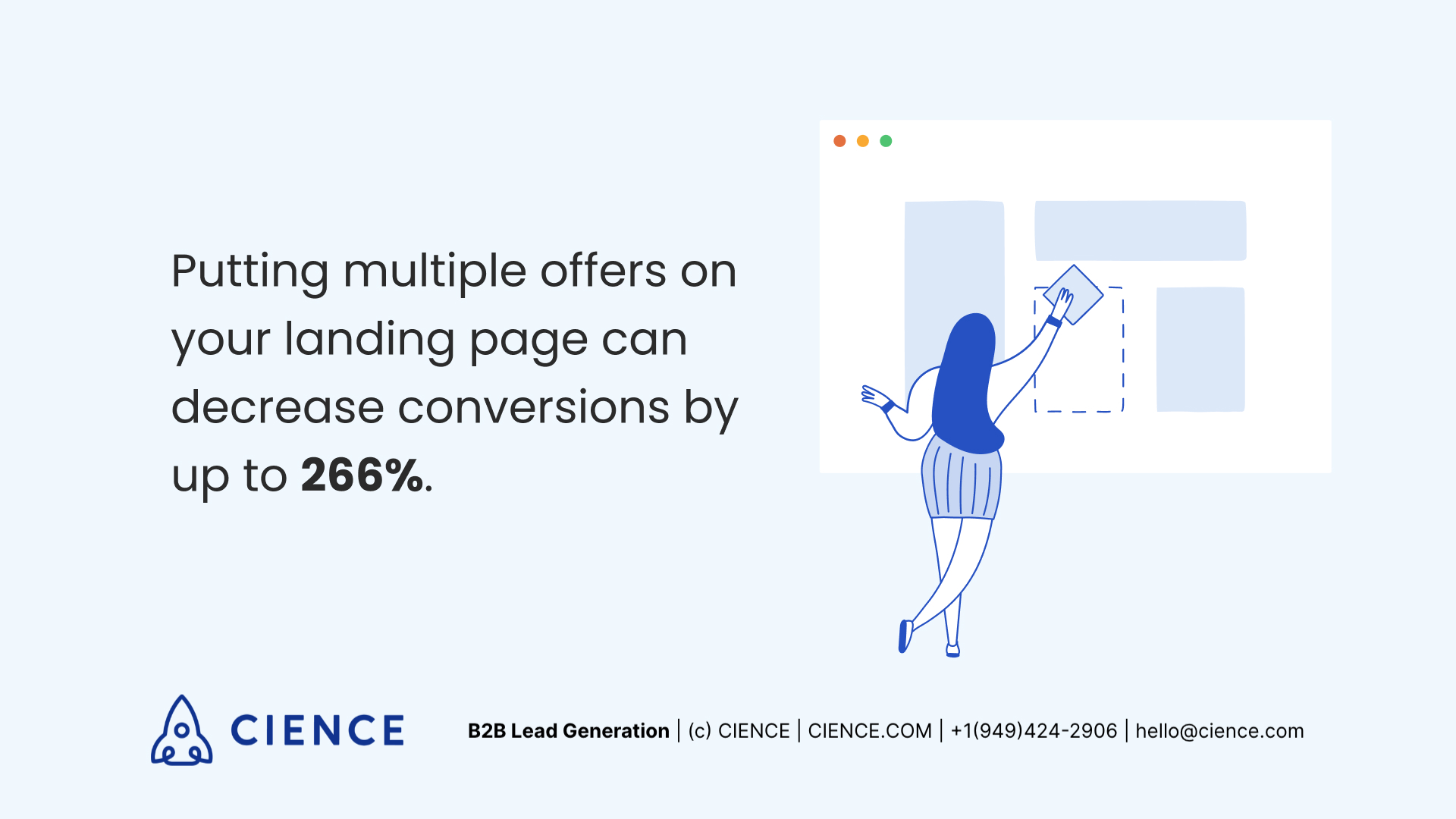
Source: Bluleadz, 2019
Many offers placed on one page can be confusing to navigate through. To avoid overwhelming your lead with too many offers, create different landing pages for each opportunity. It will be much more efficient.
14. Get into top 10% of landing pages to receive the best conversions.
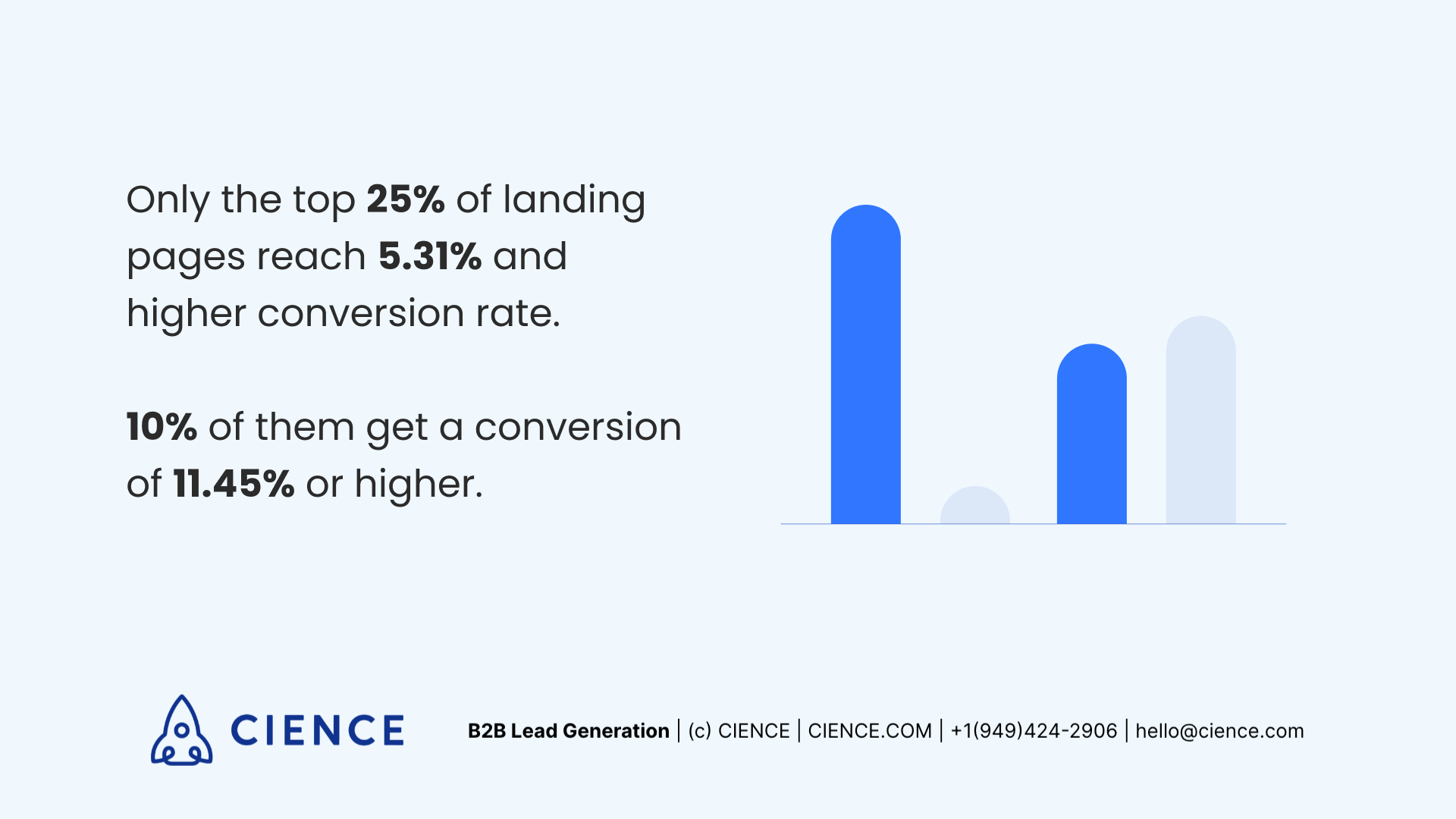
Source: WordStream, 2019
The conversion rate varies considerably depending on the industry. But, on average, reaching a 3% conversion is pretty good. Only the top pages get to 5.31% and higher. But, if you get into the 10% of top landing pages, you get twofold of this—an 11.45% conversion rate.
15. Use videos.
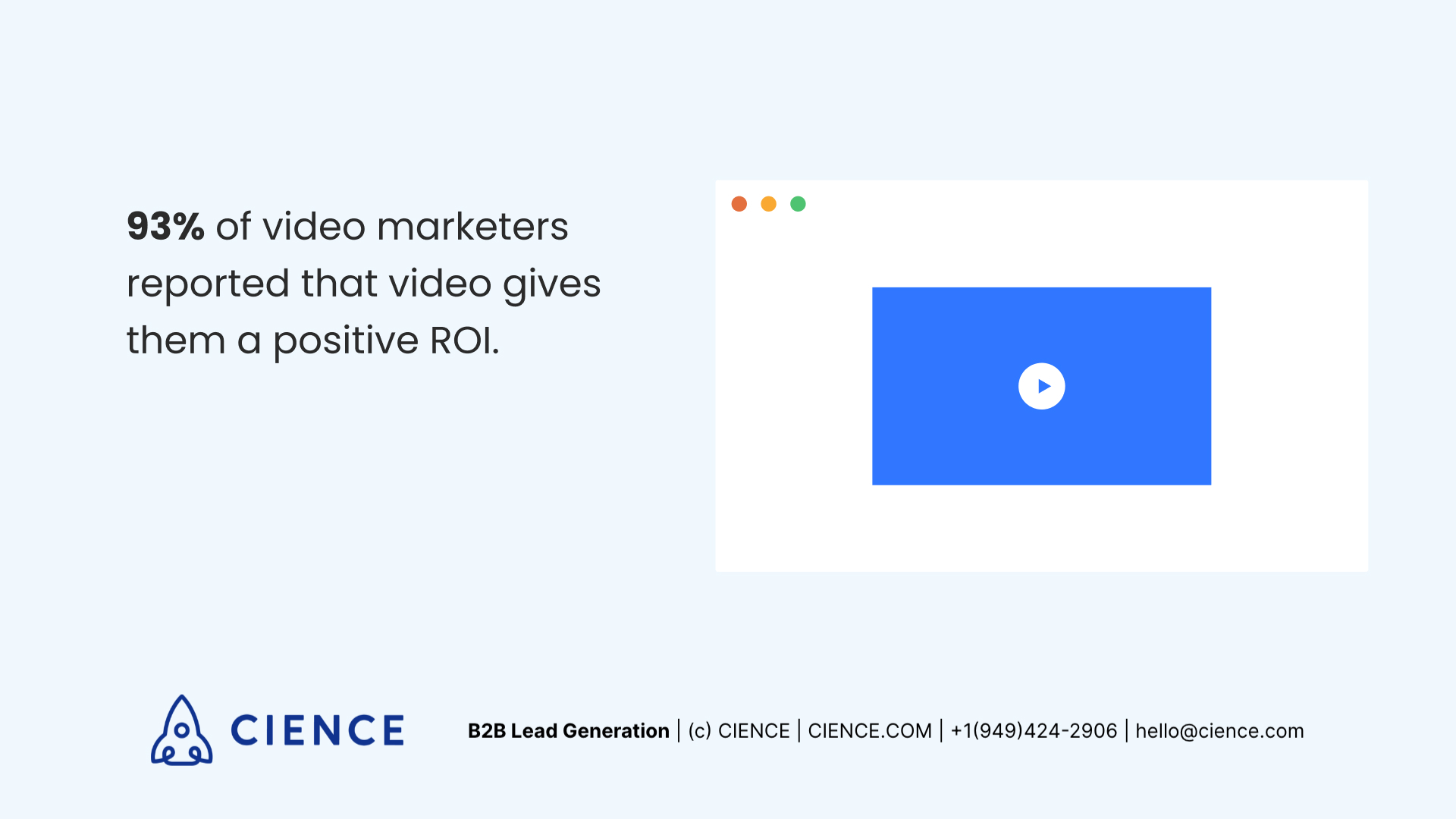 Source: Wyzovl, 2021
Source: Wyzovl, 2021
The more time users spend on your website and the better your website is optimized, the higher is the likelihood that they’ll convert into clients. Relevant videos can be a great strategy to grab a user’s attention for long enough to convince them to click the CTA.
16. Decrease the page load time to the minimum.
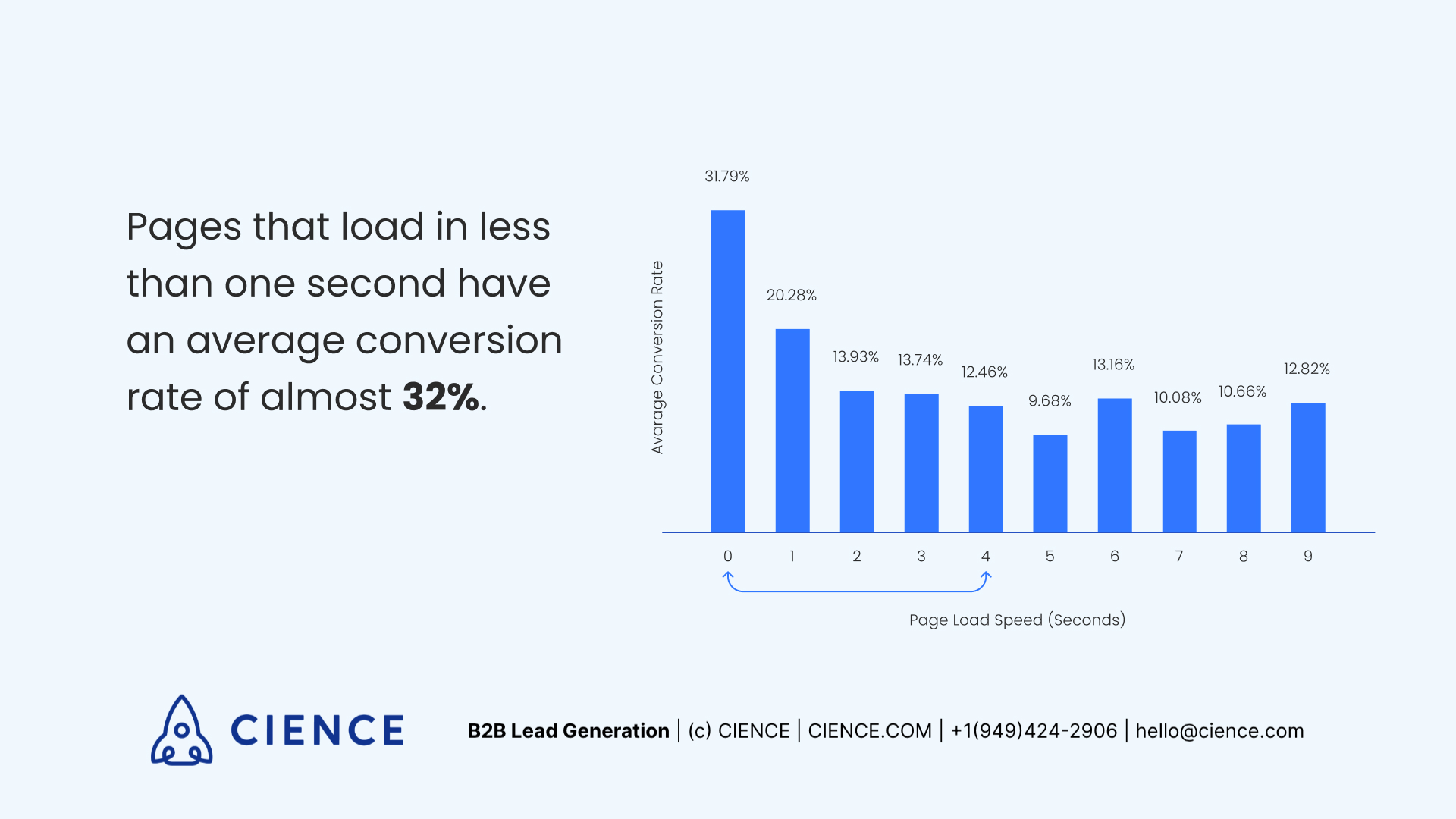
Source: Portent, 2019
With landing pages, there’s a simple correlation observed—the lower the page load time, the higher the conversion rate. If you manage to optimize your page load time to up to a second, expect to convert every third lead into a client. If your load time is one second exactly, every fifth lead can be converted. That’s how important those milliseconds are.
General Stats About Landing Pages
17. Embed a Google map.

Source: Nifty, 2018
As a rule of thumb, landing pages are targeted at a narrow group of people who may hypothetically fit the business’s buyer persona and ideal customer profile (ICP). For example, If you are a company selling air conditioners for businesses, you need to target your landing page by the location (your city, your state). And having an embodied Google map on the web page will reassure that these local customers, who you are targeting your services to, will find you in Google faster.
18. Never reuse the landing pages.
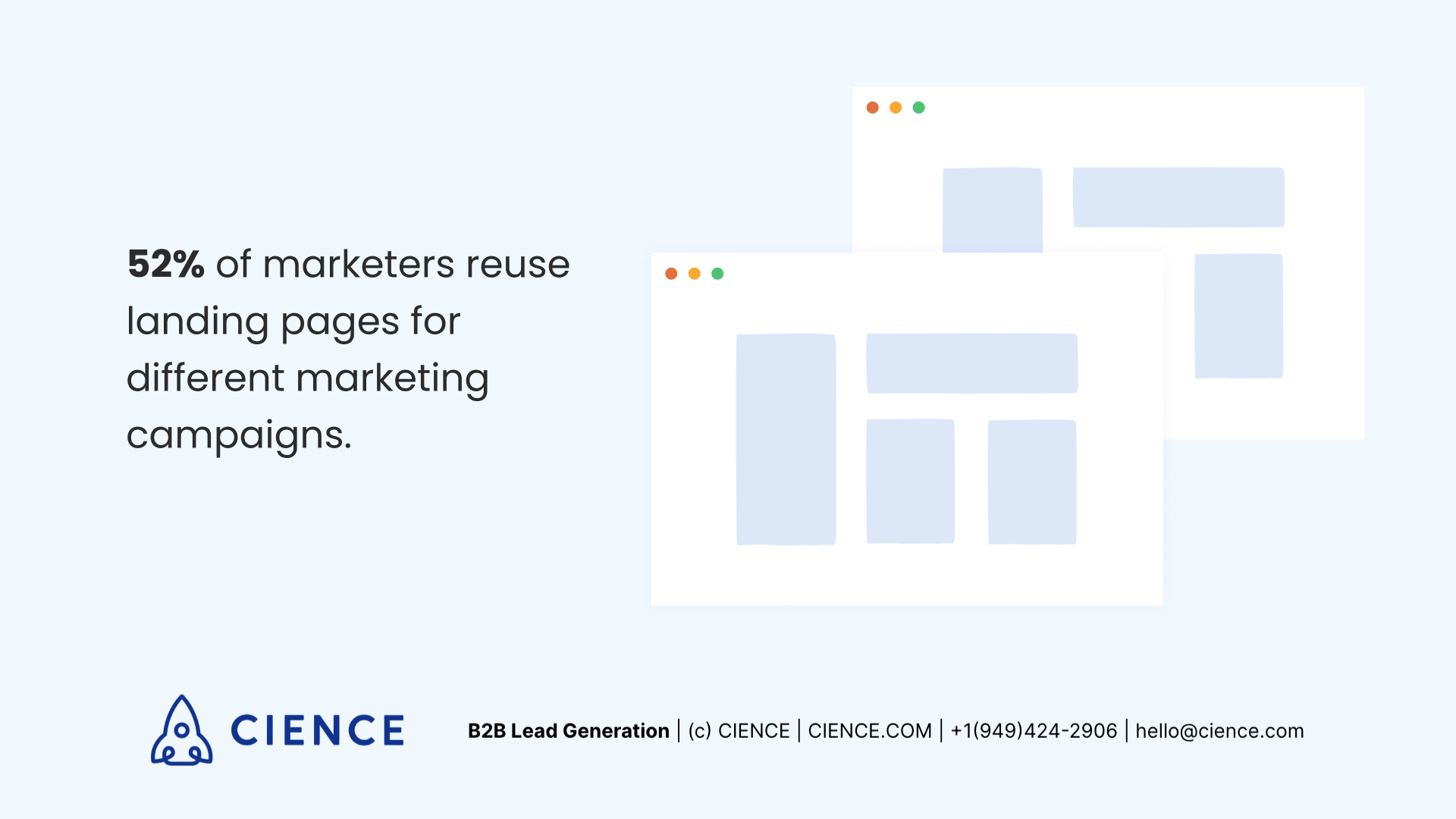 Source: MarketingExperiments, 2018
Source: MarketingExperiments, 2018
If you are among this 52% of marketers, you should reconsider your marketing strategy. Landing pages with the highest conversions are usually targeted at a very narrow segment of users with very specific business needs. Reusing landing pages doesn’t add any value to your leads; the chances that you’ll convert them into clients are very low. Instead, try to create more landing pages for different, but narrow-targeted users, or build dynamic landing pages, which can change their content depending on the behavioral characteristics of the page visitor.
19. CTRs from images are extremely low.

Source: SeoClarity, 2020
Imagine, only two out of a thousand users might actually click on the image on your website. Considering that the average conversion rate of a landing page is about 2.35%, what does it leave you with? One conversion per 100.000 views? Not very promising. Surely, for some business industries like Fashion, Travel, Real Estate, using images is totally justified. However, if your business isn’t about visual content, then investing large sums into Image SEO probably isn’t the best strategy to choose.
20. Use landing pages as sign-up forms.
 Source: Omnisend, 2018
Source: Omnisend, 2018
These landing page stats require a longer explanation. Here's a graph to illustrate this point:
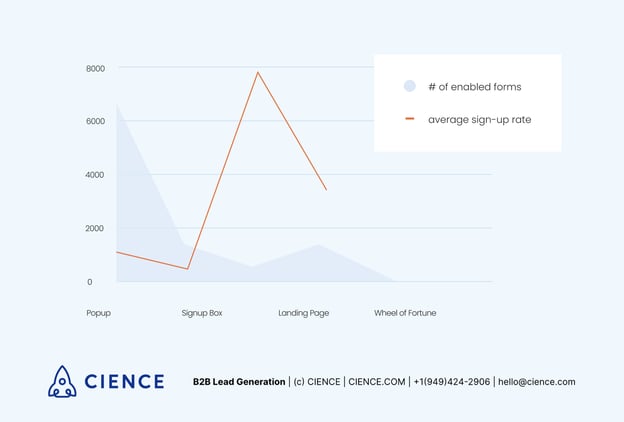
As you can see from the image above, pop-ups are the most popular type of sign-up by a wide margin from the landing pages. However, before embodying pop-ups into your website’s HTML code, you also need to take into account the effectiveness of these sign-up forms, meaning how often the users are actually paying attention to them. Thus, we are expecting that if pop-ups are the most popular, they must be more effective and generate more views. However, in reality, the stats show that landing pages have seven times higher conversion rates compared with pop-ups, which occupy the second-lowest results after signup boxes.
21. Almost half of Google searches are zero-click ones.
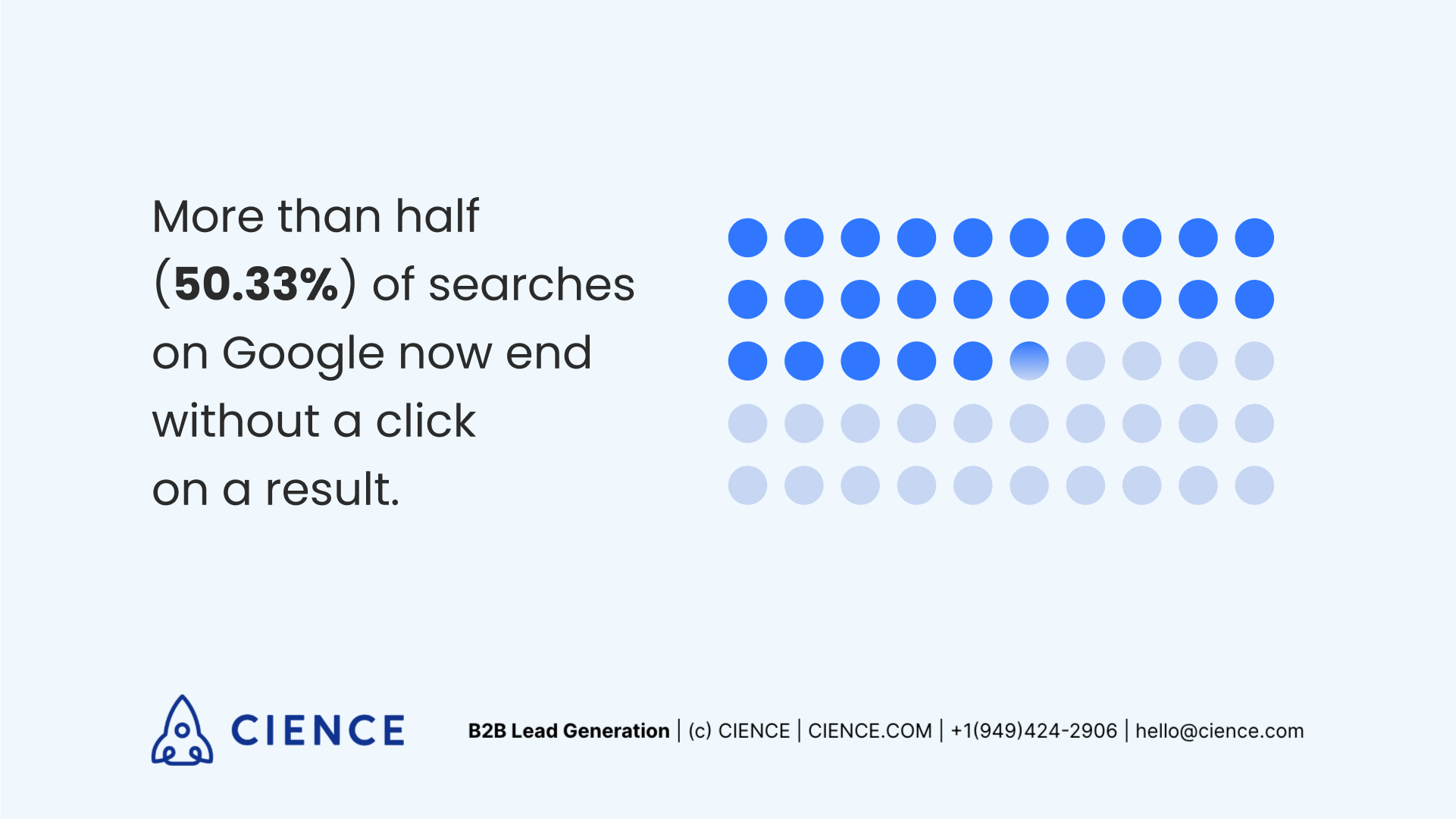
Source: Jumpshot via Sparktoro, 2019
Unfortunately, there’s not much you can do about this metric (unless you’re the CEO of Google). For the last couple of years, Google has changed its searching algorithms, making them more Google-orientated. In simple words, now Google sends a huge number of search clicks to their properties like Youtube, Google Maps, Google Blogger, Google.com subdomains, etc. (check a full list here), creating a market dominance and making it impossible for other businesses to compete for a higher rank in the Google search. This search monopoly makes it impossible for others to win a click when computing with such a business giant as Google, especially on its territory—the Internet. So, either accept the situation as it is or try to find another way to combat it.
22. Embed clickable graphics.
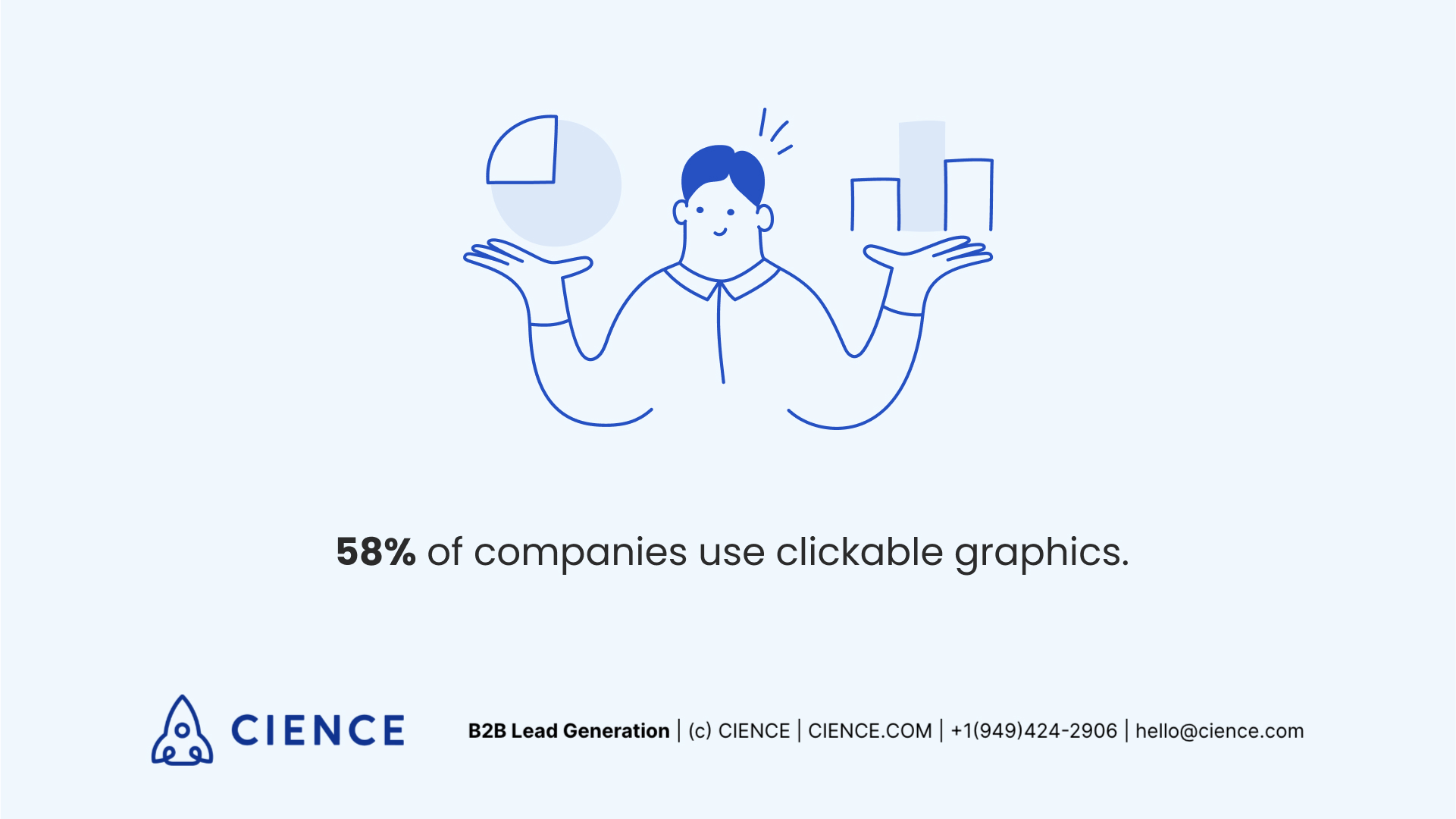
Source: MarketingExperiments, 2019
With the rise of visual-centric content, it is quite obvious that marketers will try their best to make users click on the page content. However, when it comes to landing page conversion rate, using less buttons is more. You don’t want anything to distract the potential customer from pressing the call-to-action button. This doesn’t mean that clickable graphics are bad; they are just a bit troublesome to handle. If you are not sure how to use it properly, better test it first to make sure it doesn’t ruin the conversions.
23. Give up videos to increase page load speed.
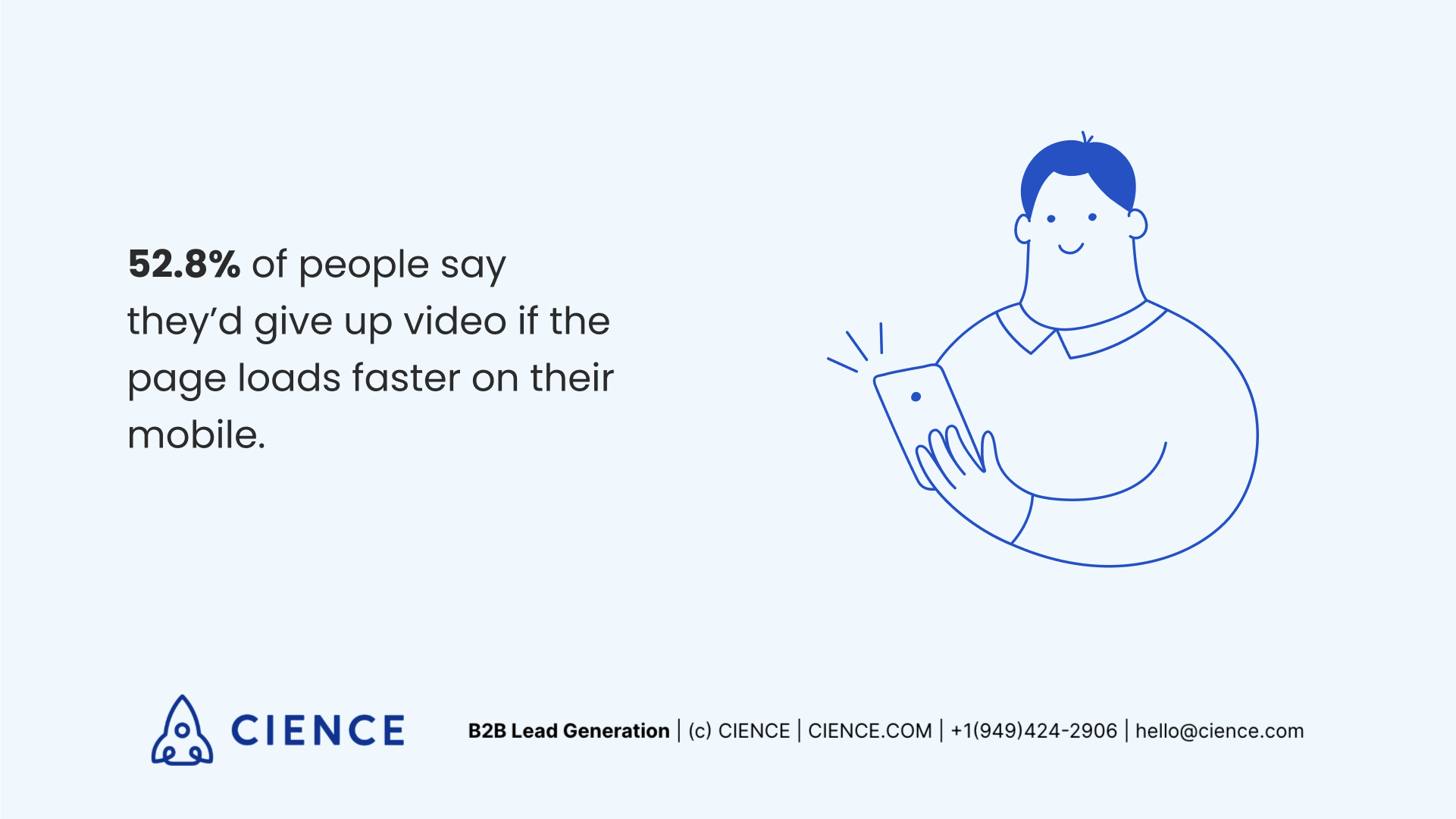
Source: MarketingCharts, 2019
The phrase “time is money” has never been so true as when it comes to the landing page speed load time. If the page doesn't load fast enough, your business is going to lose a lot of potential customers, and therefore a lot of money. To avoid this, consider giving up some aspects of the page in favor of its speed. The majority of users would prefer you give up either a video (52.8%) or an animation (56.6%) to have a quicker page load time.
Statistics on Landing Pages Testing
24. Create a landing page testing strategy.

Source: Business 2 Community, 2012
Business is all about improving. If you stop moving forward, your competitors might catch you and leave you behind. But you can’t just walk in the dark; you need a plan and a strategy. A landing page testing strategy is one of those guiding lights to help your B2B company move forward and grow. Don’t ever neglect its importance.
25. Improve your targeting and testing strategies.
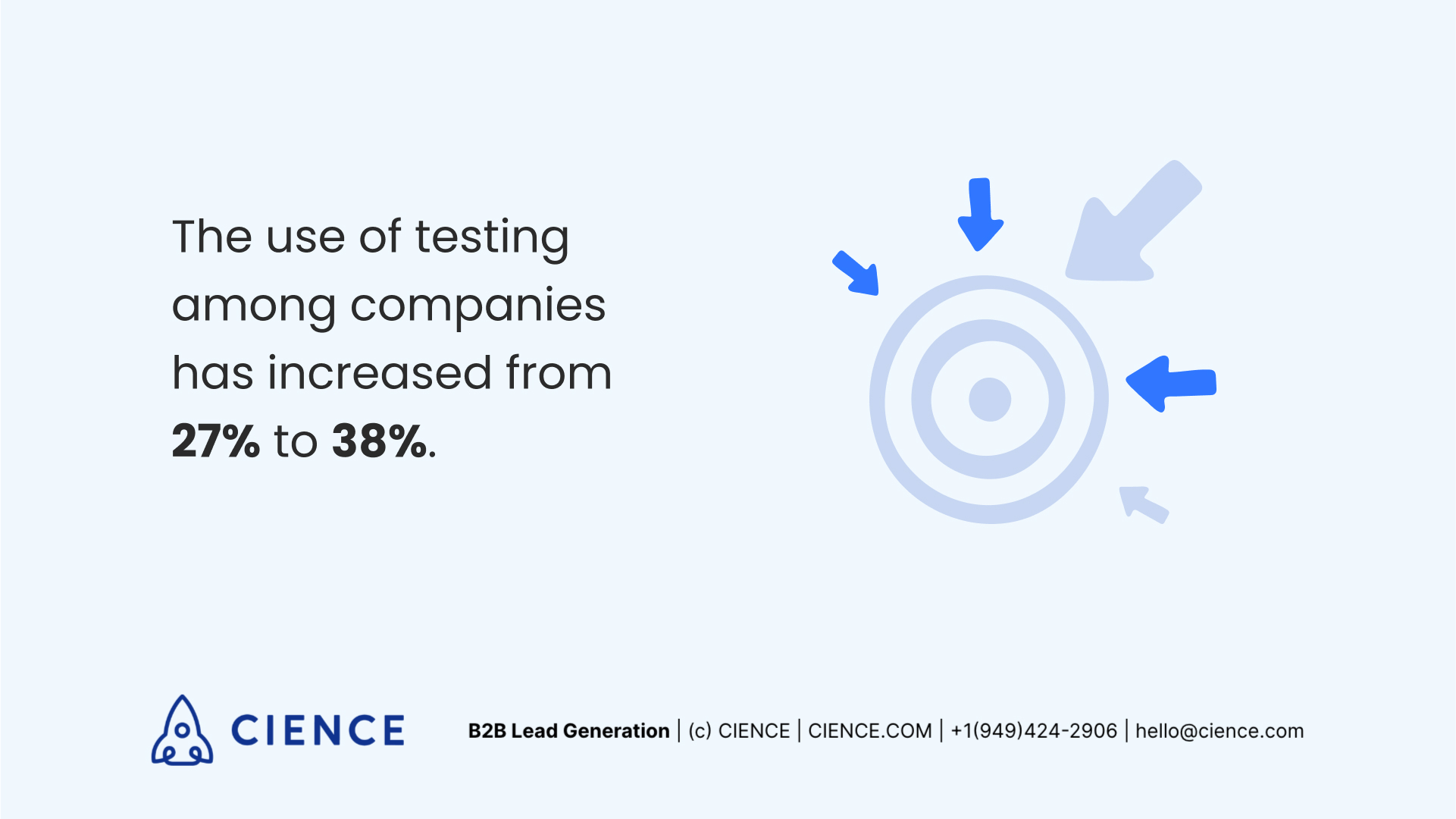 Source: Econsultancy, 2021
Source: Econsultancy, 2021
Improving conversion rates is a challenge for many B2B organizations. However, it is a complex problem, and it needs complex solutions. You cannot just simply change the landing page design and expect a boost in conversions. You first need to get to know your audience, your buyer persona, your ICP, and only then define the best way to target them through constant testing and strategy evaluations. The more you find out about your customer, the higher the conversion will be.
26. Use landing page A/B testing.
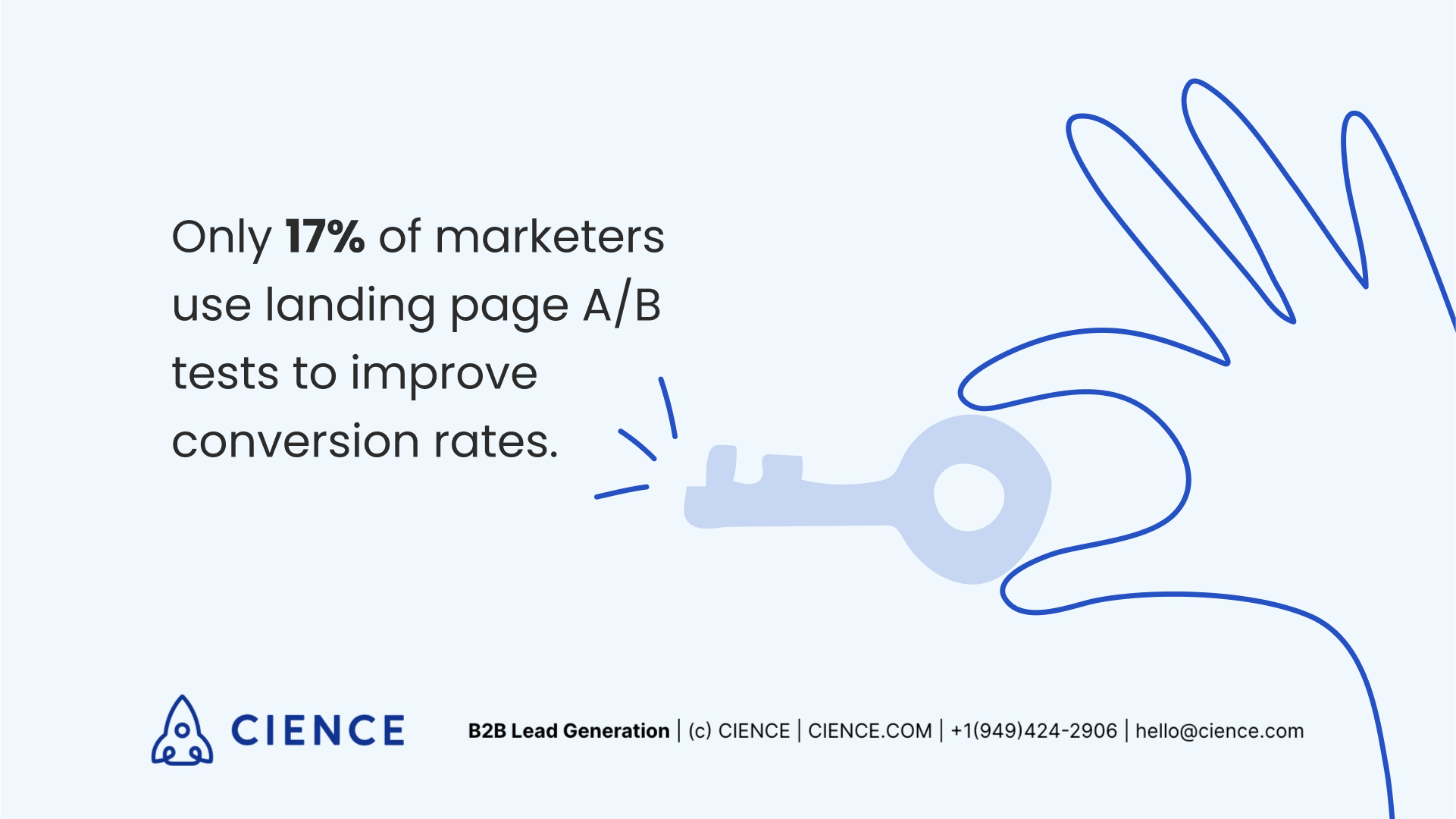
Source: Hubspot, 2020
A/B testing is one of the simplest and most effective ways to improve the conversion rate for your landing page. It is based on showing two different versions of the same page to two different categories of users and defining which version of the landing page performs better. The purpose of A/B testing is to find the most efficient solutions that will bring maximum profit to your business. A/B testing can be applied to anything: email campaigns, UX design, call scripts, etc.
Boost Your Conversion Rates with Landing Pages
Landing pages are an easy and efficient outreach channel, which has great potential to seriously boost your conversion rate. To get your page to the top of the search list, make sure to stay up-to-date and check what landing page features are the most relevant. Build a strong testing strategy, implement it step by step, target precisely, and stay creative. Still not sure how to get setted up with landing pages? Contact us and learn more about it.
A Few (Related) Sales Posts
 Featured image: Is Your Website Lead Generation Friendly? - Read full post: Is Your Website Lead Generation Friendly?
Featured image: Is Your Website Lead Generation Friendly? - Read full post: Is Your Website Lead Generation Friendly?
Is Your Website Lead Generation Friendly?
 Read full post: Top 4 B2B Marketing Mistakes and How to Avoid Them
Read full post: Top 4 B2B Marketing Mistakes and How to Avoid Them

 Read full post: What is Lead Generation? A Practical Guide for Beginners
Read full post: What is Lead Generation? A Practical Guide for Beginners